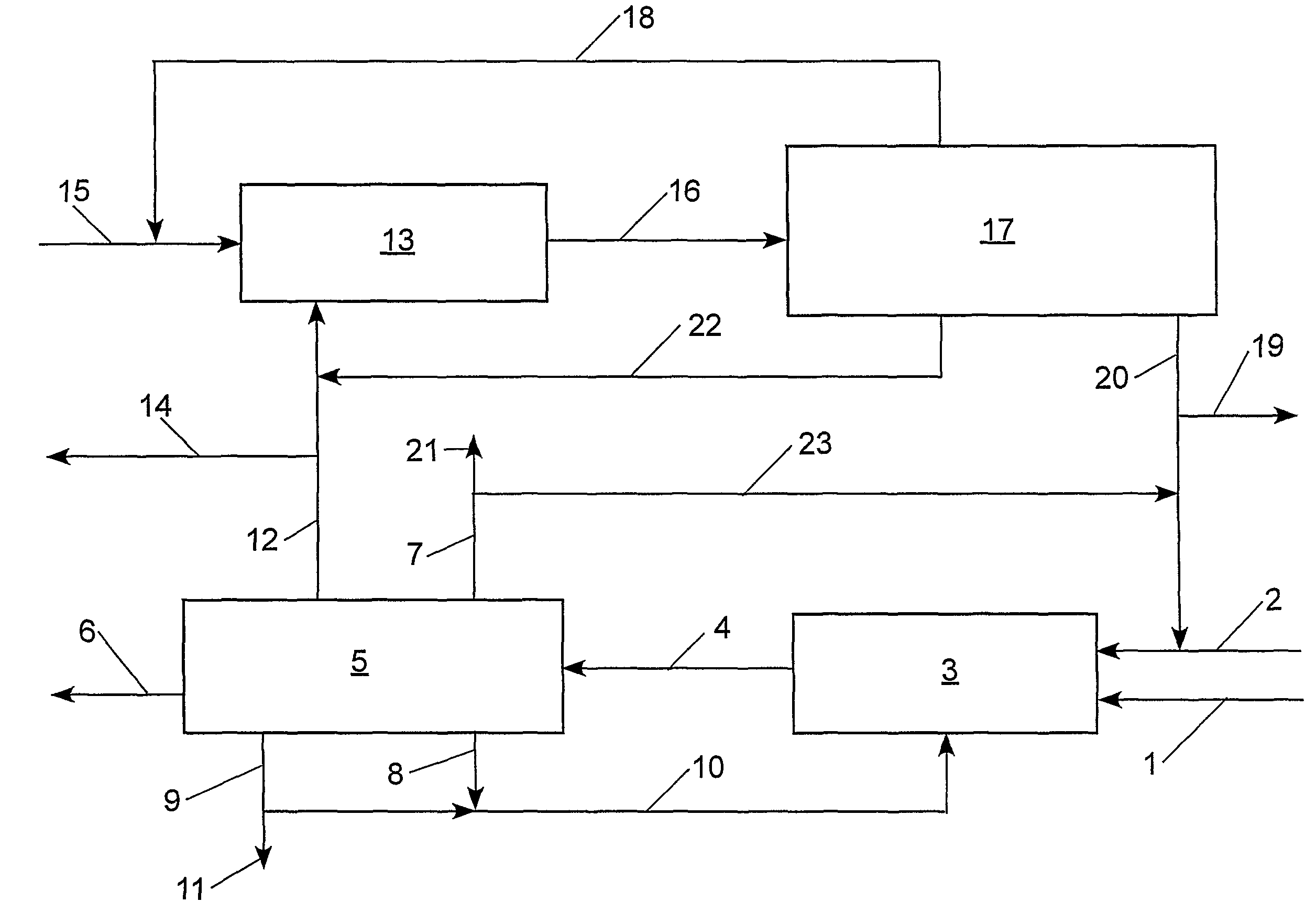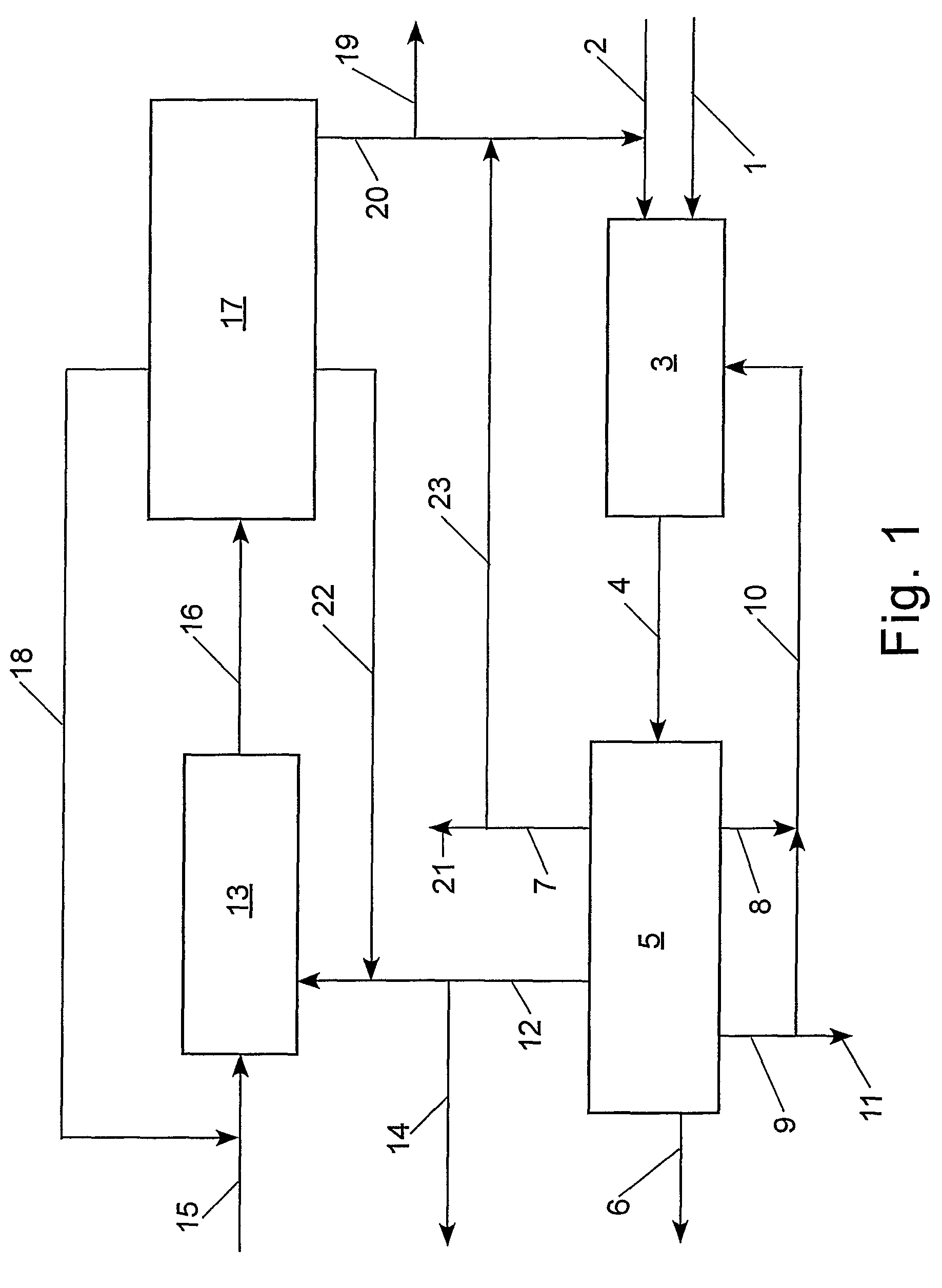Metathesis process for preparing an alpha, omega-functionalized olefin
a technology of omega-functionalized olefin and metathesis process, which is applied in the direction of hydrocarbon by metathesis reaction, hydrocarbon preparation catalyst, organic chemistry, etc., can solve the problems of difficult recovery and regeneration of grubbs catalysts, rapid deactivation of first- and second-generation grubbs catalysts, and low catalyst turnover numbers. achieve the effect of longer catalyst lifetime and high catalyst turnover number
- Summary
- Abstract
- Description
- Claims
- Application Information
AI Technical Summary
Benefits of technology
Problems solved by technology
Method used
Image
Examples
example 1
[0083]The following procedure was employed to evaluate the feasibility of cross-metathesizing methyl oleate with 1-decene. Methyl oleate (Aldrich) was degassed and purified over a column of alumina. An amount of alumina was employed equal to 50 percent of the weight of the methyl oleate. In a dry box, the purified and degassed methyl oleate (6.0147 g, 20.1 mmol) and 1-decene (6.2770 g, 40.3 mmol) were combined with tetradecane (1.0549 g, internal standard) and a stir bar in a heavy walled glass reactor (Ace #8648-135), which was capped with a rubber septum. Tricyclohexylphosphine[1,3-bis-(2,4,6-trimethylphenyl)-2-imidazolidinylidene]benzylidene ruthenium(IV) dichloride (1.16 mg, 0.00125 mmol), a Grubbs catalyst, was dissolved in toluene (2.50 mL) and the resulting catalyst solution (0.25 mL; 0.000116 mmol catalyst) was loaded in a gas tight syringe and capped. The molar ratio of methyl oleate to 1-decene was 1 / 2. Both the reactor and syringe were removed from the glove box to a labo...
example 2
[0099]With reference to Table 2 and FIG. 2, the claimed process was simulated using an ASPEN® software program (Aspen Technology, Inc., 10 Canal Park, Cambridge, Mass. 02141, USA) for the following preferred embodiment: step (a) the cross-metathesis of methyl oleate and 1-decene; step (b) separation of the output stream from step (a) into a stream comprising methyl decenoate, a stream comprising 9-octadecene, a stream comprising unconverted methyl oleate, and a stream comprising unconverted 1-decene; step (c) the cross-metathesis of 9-octadecene with ethylene; step (d) separation of the output stream from step (c) into a stream comprising 1-decene, a stream comprising unconverted ethylene, and a stream comprising unconverted 9-octadecene. The physical properties of ethylene, 1-decene, and methyl oleate were taken from the ASPEN® database; however, the ASPEN® database does not contain information on methyl decenoate, 9-octadecene, and dimethyl 9-octadecen-1,18-dioate. Consequently, t...
PUM
| Property | Measurement | Unit |
|---|---|---|
| total pressure | aaaaa | aaaaa |
| total pressure | aaaaa | aaaaa |
| total pressure | aaaaa | aaaaa |
Abstract
Description
Claims
Application Information
 Login to View More
Login to View More - R&D
- Intellectual Property
- Life Sciences
- Materials
- Tech Scout
- Unparalleled Data Quality
- Higher Quality Content
- 60% Fewer Hallucinations
Browse by: Latest US Patents, China's latest patents, Technical Efficacy Thesaurus, Application Domain, Technology Topic, Popular Technical Reports.
© 2025 PatSnap. All rights reserved.Legal|Privacy policy|Modern Slavery Act Transparency Statement|Sitemap|About US| Contact US: help@patsnap.com



